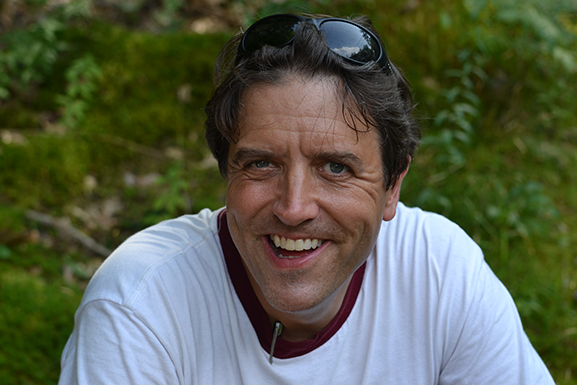
From the August 2014 Desktop News | Some of the world’s most prominent botanists have named a tree species found in western Ecuador the Gustavia johnclarkii after a University of Alabama professor. The most interesting part? This is the sixth species to be named in his honor.
Dr. John L. Clark, an associate professor in the Department of Biological Sciences and curator and director of the University of Alabama Herbarium, has made frequent trips to Ecuador since he served as a Peace Corps volunteer there from 1994 to 1997. He worked primarily with the National Herbarium and the Jatun Sacha Foundation during that time, helping to establish the more than 4,400-acre Bilsa Biological Reserve, which protects one of the world’s most important biodiversity hotspots.
Clark documented more than 50 new species during his time in the Ecuador rainforest, including the tree species that was recently named in his honor.
“Back then, I would climb trees, and this particular tree was one that I became very familiar with,” Clark said. “It is an honor to have this species named after me, especially because the authors of the species, Scott Mori and Xavier Cornejo, are highly respected tropical botanists.”
Working in the tropics has been humbling, Clark said. Of his more than 13,000 plant collections, only 60 to 70 percent have been accurately identified due to a lack of basic biodiversity data in tropical regions.
“There is so much diversity, and we are racing against rapid rates of deforestation,” he said. “In a few decades, biologists will look at our collections, and they will be baffled by not being able to locate many things that are common today because forests are being replaced by pastures. I am honored to work at The University of Alabama because it has supported and encouraged me and my students to do the kind of science that has a long-lasting and positive impact for increasing our knowledge of plant biodiversity.”
Clark first traveled to Ecuador as a high school exchange student in 1988 and returned to the country on a Fulbright scholarship nearly a decade after serving as a Peace Corps volunteer. Clark has also conducted extensive botanical field work in Colombia and Cuba. In 2008 he and his team found a plant in Cuba that no one had seen or collected in more than 60 years.
He received his bachelor’s degree from the University of Vermont and his doctorate from George Washington University. He conducted postdoctoral research at the University of Utah and the Smithsonian Institution before joining the UA faculty in 2006.
His research interests include molecular systematics, phylogeny, taxonomy, pollination biology, and biogeography of the flowering plant family Gesneriaceae; floristics of northwestern Ecuador; and evolution of upside-down flowers, or floral resupination.